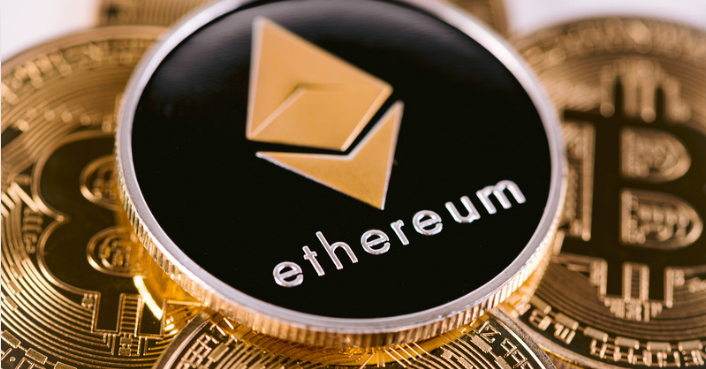Decentralized Finance, commonly referred to as DeFi, represents a paradigm shift in the way financial systems operate. By leveraging blockchain technology, DeFi seeks to eliminate intermediaries, offering financial services that are transparent, accessible, and open to anyone with an internet connection. This article delves into the core aspects of DeFi, its components, benefits, challenges, and future prospects.
Introduction to Decentralized Finance
What is Decentralized Finance?
Decentralized Finance (DeFi) refers to a collection of financial services that are built on blockchain technology, primarily on the Ethereum network. Unlike traditional financial systems that rely on central authorities such as banks and exchanges, DeFi operates through decentralized networks and protocols. These protocols facilitate various financial activities like lending, borrowing, trading, and earning interest, all without the need for intermediaries.

The Origins of DeFi
The DeFi movement traces its origins back to the creation of Bitcoin in 2009, which introduced the concept of decentralized digital currency. However, it was the advent of Ethereum in 2015, with its smart contract functionality, that truly laid the groundwork for DeFi. Smart contracts enable the execution of code on the blockchain, allowing for the automation of complex financial transactions.
Core Components of DeFi
Blockchain Technology
At the heart of DeFi is blockchain technology. A blockchain is a decentralized, immutable ledger that records all transactions across a network of computers. This ensures transparency, security, and the elimination of single points of failure.
Smart Contracts
Smart contracts are self-executing contracts with the terms of the agreement directly written into code. They run on the blockchain, automating and enforcing the performance of contractual agreements without the need for intermediaries.
Decentralized Applications (DApps)
DApps are applications that run on a decentralized network. In the context of DeFi, DApps provide various financial services such as lending platforms, decentralized exchanges, and insurance protocols. They interact with smart contracts to execute financial transactions.
Tokens and Stablecoins
Tokens are digital assets that represent value on the blockchain. In DeFi, tokens can represent anything from ownership in a protocol to rights to participate in governance. Stablecoins, a subset of tokens, are pegged to stable assets like fiat currencies, providing a stable store of value in the volatile crypto market.
Key DeFi Services
Lending and Borrowing
One of the most popular DeFi services is lending and borrowing. Platforms like Aave and Compound allow users to lend their crypto assets to earn interest or borrow assets against their holdings. These services are facilitated by smart contracts, ensuring transparency and efficiency.
How DeFi Lending Works
- Collateralization: Borrowers must provide collateral, often in the form of cryptocurrency, to secure a loan.
- Interest Rates: Interest rates are determined algorithmically based on supply and demand.
- Liquidation: If the value of the collateral falls below a certain threshold, it may be liquidated to repay the loan.
Decentralized Exchanges (DEXs)
Decentralized exchanges enable the peer-to-peer trading of cryptocurrencies without the need for a central authority. Platforms like Uniswap and SushiSwap use automated market maker (AMM) protocols to facilitate trades, ensuring liquidity through pools of assets provided by users.
Advantages of DEXs
- Security: Users retain control of their funds, reducing the risk of hacks.
- Anonymity: DEXs often do not require user identification.
- Accessibility: Anyone with a compatible wallet can trade on a DEX.
Yield Farming and Liquidity Mining
Yield farming involves providing liquidity to DeFi protocols in exchange for rewards. Liquidity mining is a subset of yield farming where users earn tokens for providing liquidity to specific pools.
The Mechanics of Yield Farming
- Liquidity Provision: Users deposit tokens into a liquidity pool.
- Rewards Distribution: Users earn rewards, often in the form of additional tokens, based on the amount of liquidity they provide.
- Annual Percentage Yields (APYs): Returns are often represented as APYs, which can vary based on market conditions.
Insurance Protocols
DeFi insurance protocols like Nexus Mutual provide coverage against risks such as smart contract failures and exchange hacks. These protocols leverage the decentralized nature of blockchain to offer transparent and accessible insurance services.
Synthetic Assets
Synthetic assets are tokenized versions of real-world assets like stocks, commodities, and fiat currencies. Platforms like Synthetix allow users to create and trade synthetic assets, broadening the scope of DeFi beyond cryptocurrencies.
Benefits of Decentralized Finance
Financial Inclusion
DeFi has the potential to provide financial services to the unbanked and underbanked populations. With just an internet connection, individuals can access a wide range of financial services without the need for a traditional bank account.
Transparency and Security
The decentralized nature of blockchain ensures that all transactions are transparent and immutable. This reduces the risk of fraud and increases trust in the system. Additionally, the use of smart contracts automates processes, reducing the need for human intervention and the potential for error.
Lower Costs
By eliminating intermediaries, DeFi reduces transaction costs. Users can interact directly with financial services, avoiding fees charged by banks and other financial institutions.
Programmability
The use of smart contracts allows for the creation of programmable financial instruments. This enables the automation of complex financial transactions and the creation of innovative financial products.
Challenges and Risks
Security Concerns
While blockchain technology offers enhanced security, DeFi protocols are not immune to risks. Smart contract bugs and vulnerabilities can lead to significant losses. Ensuring the security of DeFi platforms requires rigorous code audits and continuous monitoring.
Regulatory Uncertainty
The regulatory environment for DeFi is still evolving. Different jurisdictions have different approaches to regulating cryptocurrencies and DeFi activities. This regulatory uncertainty can pose challenges for the growth and adoption of DeFi.
Scalability Issues
As the popularity of DeFi grows, so does the demand on blockchain networks. Scalability issues, such as high gas fees and slow transaction times, can hinder the user experience. Layer 2 solutions and alternative blockchain networks are being developed to address these challenges.
Market Volatility
The cryptocurrency market is known for its volatility. This can affect the value of assets locked in DeFi protocols and the returns on investments. Users must be aware of the risks associated with market fluctuations.
The Future of DeFi
Interoperability
Interoperability between different blockchain networks is a key area of focus for the future of DeFi. Cross-chain solutions will enable seamless interaction between protocols on different blockchains, enhancing the user experience and expanding the DeFi ecosystem.
Institutional Adoption
As DeFi matures, institutional interest is growing. Traditional financial institutions are exploring ways to integrate DeFi into their services. This institutional adoption could bring more liquidity and credibility to the DeFi space.
Improved User Experience
For DeFi to achieve mainstream adoption, the user experience must improve. Simplified interfaces, better educational resources, and enhanced customer support will be crucial in attracting a broader user base.
Regulation and Compliance
As DeFi continues to grow, regulatory clarity will be essential. Collaborative efforts between regulators and DeFi projects can help create a compliant and secure environment that protects users while fostering innovation.
Technological Advancements
Ongoing advancements in blockchain technology, such as the development of Ethereum 2.0 and other scalable networks, will address current limitations and pave the way for more robust DeFi applications.
Conclusion
Decentralized Finance is transforming the traditional financial landscape by providing accessible, transparent, and efficient financial services. Despite the challenges and risks, the potential benefits of DeFi are immense. As technology and regulatory frameworks evolve, DeFi is poised to become an integral part of the global financial system, democratizing access to financial services and driving innovation in ways previously unimaginable.
By understanding the core components, key services, benefits, and challenges of DeFi, individuals and institutions can better navigate this emerging ecosystem and participate in shaping the future of finance.










